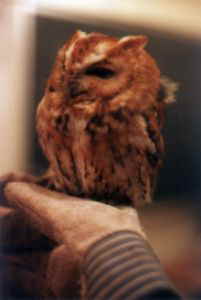ARTS & CRAFTS
CONFERENCE
GROVE PARK 1989 
|
Fine Homebuilding June/July 1989 No.54 pg.100
|
Architectural Digest
November 1992
pp. 158 - 165

|
WOOD
Nov.1998
pp.49-53 
|
WOOD
Nov.1998
pp.74 &75

|
At Home In Arkansas
KIDS
Summer 2000
pp. 16 -17

|
|
With a few thousand dollars, and a pile of Mother Earth News and Organic Gardening magazines, we were headed for anywhere that would accommodate what we felt would be a simpler and more rewarding lifestyle than the urban sprawl had to offer.
 The abandoned mountain farms of Northwest Arkansas were one of the last places that we visited in the two months that we toured the backwaters of Americas deserted agricultural past. The soil on most of the farms was as poor as when it had been abandoned during the depression. The abandoned mountain farms of Northwest Arkansas were one of the last places that we visited in the two months that we toured the backwaters of Americas deserted agricultural past. The soil on most of the farms was as poor as when it had been abandoned during the depression.
The adjoining forests had regenerated to a great extent and reasonable timberland could be bought for a song. After a few adjustments, we found ourselves the owners of 160 acres covered with massive red and white oaks, hickories, and a dozen or so other minor species.
We bought our sawmill in 1979 and began to selectively harvest our trees.
The land was immediately put into the American Tree Farm system. This allowed us to get help from various government and professional sources in planning and managing our land in a manner that would optimize yield and minimize environmental impact.
Some of the plans that were proposed ran counter to our sensibilities,and were ignored or discarded. The most notable of these is the use of herbicides to kill out unwanted vegetation or suppress less desirable species.
The concept that herbicides are "safe" is one that eludes me. We prefer to use the method of "girdling" to kill unwanted trees. This consists of cutting a groove about
3/4 of an inch deep completely around a tree. The flow of nutrients and moisture is interrupted and the tree dies in about 4 months. Slower and less certain than herbicides, it is guaranteed not to hurt wildlife or my family.

We have cut over 350,000 board feet of lumber from our land in the past 30 years. The effect has been to "release" a lot of the highly desirable species to grow to their potential. The forest canopy has restored itself from the initial heavy cuttings of cull species and trees that were of poor form or unsound. We now can cut 10 to 15 thousand bd ft of high quality lumber from our forest with an increase of quantity and quality every year.
The logging roads and openings in the canopy provide forage and cover for a huge variety of wildlife. From its near barren start, we now routinely see deer, bear, turkey, bobcats, coyotes, and a dozen or so other minor species of mammals.
The bird population has exploded with dozens of species abundant now.
From the Eagles in the spring, to the Great Horned and Screech Owls every night,
we enjoy our daily contact with all but the most inconsiderate Raptors.
And for those occasional , "hard to deter" predators, we keep a person  al flock of crows that treat all threats, feathered or furred, with equal disdain. al flock of crows that treat all threats, feathered or furred, with equal disdain.
THIS IS A PICTURE OF THE KIDS WITH A NEAR RECORD "COACHWHIP" SNAKE.
We are especially proud of the habitat improvement that we have done with the reptile and amphibian species. We have recorded species of both that are deemed "rare" in the field guides.
The furniture that we build from the trees will extend their lives for a hundred or more years past their harvesting at maturity. Our management and harvesting practices guarantee that all future generations that desire to, can continue with this process.
I look at furniture in our house, or beams in the ceiling and flooring under our feet, and remember the tree that it was cut from.
Local Film-Maker JC Cocker recently stopped by to take time to shoot a short feature.
This was an entry for the:
2009 Little Rock Film Festival in the Sustainable Alternatives Contest.
DRYAD STUDIOS; From Forest to Furniture |









 al flock of crows that treat all threats, feathered or furred, with equal disdain.
al flock of crows that treat all threats, feathered or furred, with equal disdain.